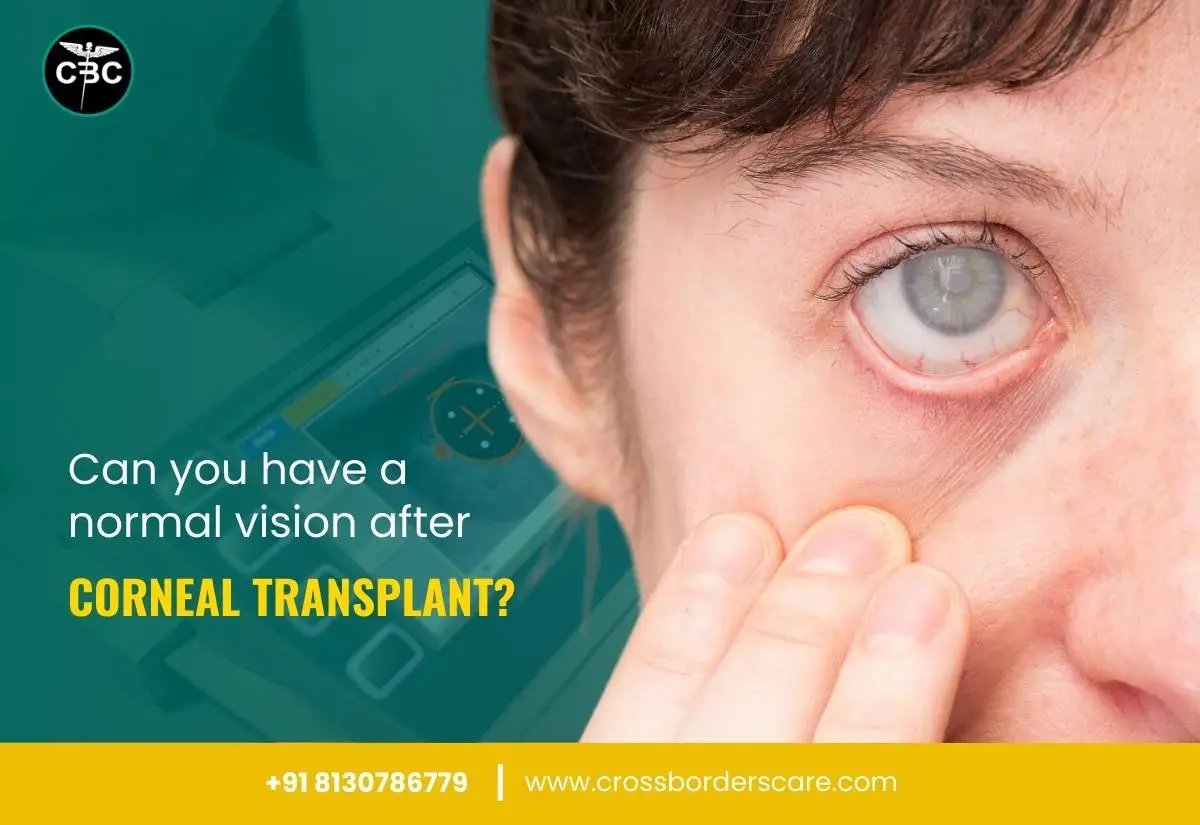The goal for patients undergoing a corneal transplant is to restore their normal vision. It is the need of patients with severe corneal conditions that can’t be corrected with contact lenses or glasses.
The chances that a patient can gain normal vision after a corneal transplant depends on several factors. Read on to find the different factors contributing to this realistic goal of many patients.
Normal vision after corneal transplant- Realistic or not?
Firstly, it is vital to understand if the expectations of a patient to have normal vision after a corneal transplant are realistic or not.
A majority of patients will have their vision at least partially restored after the corneal transplant. This is because the eye requires some time to adjust to the new cornea. The duration of the outer corneal layer after the successful transplant can be a few weeks to months.
The eye specialist can offer several vision correction adjustments after this healing is complete in the patients of corneal transplant surgery. These covers:
-
Correcting the corneal unevenness
The uneven surface of the corneal stitches can create irregularities leading to astigmatism which makes vision blurry. Hence, eye doctors may release some stitches to eliminate astigmatism.
-
Correcting the vision problems
Eye doctors may recommend laser eye surgery, contact lenses, or glasses for correcting refractive errors like nearsightedness or farsightedness.
So, patients must understand that achieving perfect vision after a corneal transplant is dependent on different factors and is specific for different patients.
Factors affecting the restoration of normal vision after corneal transplant
Moving ahead, here are the top factors affecting the chances of normal vision restoration after the corneal transplant:
-
Pre-operative factors
It covers underlying conditions, the patient’s age, and general eye health.
The nature and severity of the patient’s eye condition define the restoration of normal vision after the corneal transplant. The young patients have quick recovery rates and chances of better healing.
The presence of other eye conditions along with corneal issues or diseases can further affect normal vision restoration in patients.
-
Surgical factors
It refers to surgical techniques, the quality of the donor tissue, and surgical experience.
The type of surgical technique adopted in the corneal transplant impacts the overall outcomes and the recovery times. It can be penetrating keratoplasty (PKP), deep anterior lamellar keratoplasty (DALK), and endothelial keratoplasty (EK) depending on the patient’s condition.
The condition and health of the donor tissue impact the overall success rate which further impacts the normal vision after the corneal transplant. The experience of skilled eye surgeons helps patients get the best and most optimal outcomes after a corneal transplant.
-
Post-operative factors
It involves the chances of rejection, the healing process, and follow-up care.
It is essential to monitor if the body is rejecting the newly transplanted cornea. Further, it is vital to ensure proper wound healing and management of possible complications.
Regular adjustments and monitoring of medications help prevent any chances of complications for patients after corneal transplant.
-
Rehabilitation
It encompasses the visual rehabilitation of the patient’s eye after the corneal transplant.
The use of contact lenses or eyeglasses can help patients reach close to optimal visual quality. Laser surgeries can help overcome astigmatism due to corneal stitches while visual training improves the overall visual acuity and perception of depth.
-
Technological developments
Last but not least, the technological developments in corneal transplants can help define if the patient has a normal vision after the treatment. The latest technological developments cover the use of femtosecond laser technology, tissue engineering, and immunosuppressive therapies.
The femtosecond laser technology uses a precise laser for making the required corneal incisions for transplant. It helps in reducing the overall surgery trauma. Tissue engineering helps eliminate the chances of donor cornea rejection by offering bioengineered corneal substitutes.
Tissue engineering is further improving tissue preservation techniques. The involvement of immunosuppressive therapies reduces the risk of corneal rejection impacting the restoration of vision.
Summing words
To sum up, several factors contribute to the chances of the patient restoring their normal vision after a successful corneal transplant. It is easy to understand these factors in detail and set realistic expectations for this advanced medical procedure.
Cross Border is the right solution to gain enhanced benefits like expert diagnosis, personalized treatment, and the best corneal transplant surgery cost in India.




